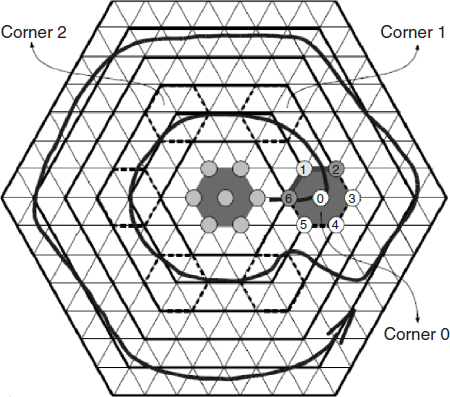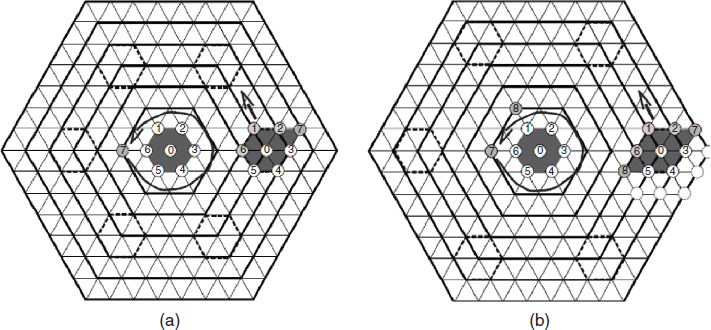7.8 AUGMENTATION ALGORITHM FOR ROBOT SELF DEPLOYMENT
In the same vein as the previously discussed scenario, the deployment of a biconnected network of sensors around a POI is addressed in Falcon et al. (2009). The major difference is that sensors are themselves endowed with movement capabilities, and are therefore capable of self-deploying around the POI. Here, the sensors are released one at a time from potentially different remote places.
The main idea of the proposed protocol is to incrementally build a perfect triangle tessellation around the POI (this tessellation structure is chosen here for the same geometrical reasons as previously discussed), while minimizing the sum of sensors moves. This protocol roughly works as follows: the first sensor moves directly to the exact position of the POI. Then, when a new sensor is released, it moves toward the POI until entering the range of a sensor that already belongs to the tessellation. At this point, the already deployed sensor is in charge of finding an appropriate tessellation position to ask the new node to move at.

Figure 7.8 Simple case of deployment by mobile robots.

Figure 7.9 Robot team behavior. (a) One robot in the outmost layer. (b) Several robots in the outmost layer.
The main objective here is to minimize the sum of robots' ...
Get Wireless Sensor and Actuator Networks: Algorithms and Protocols for Scalable Coordination and Data Communication now with the O’Reilly learning platform.
O’Reilly members experience books, live events, courses curated by job role, and more from O’Reilly and nearly 200 top publishers.

